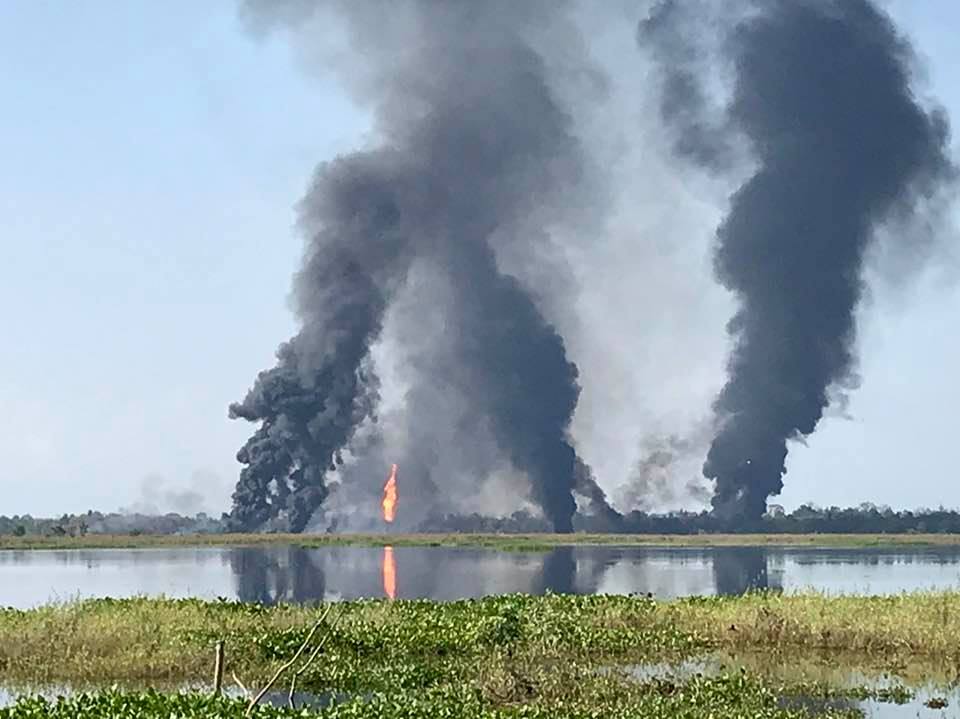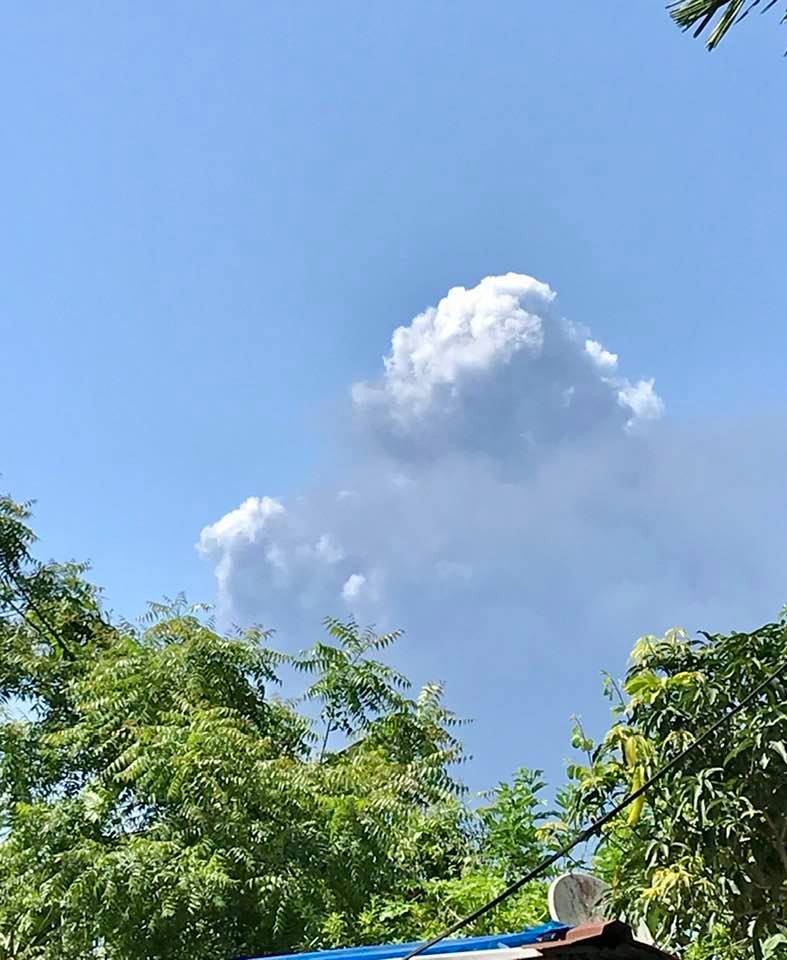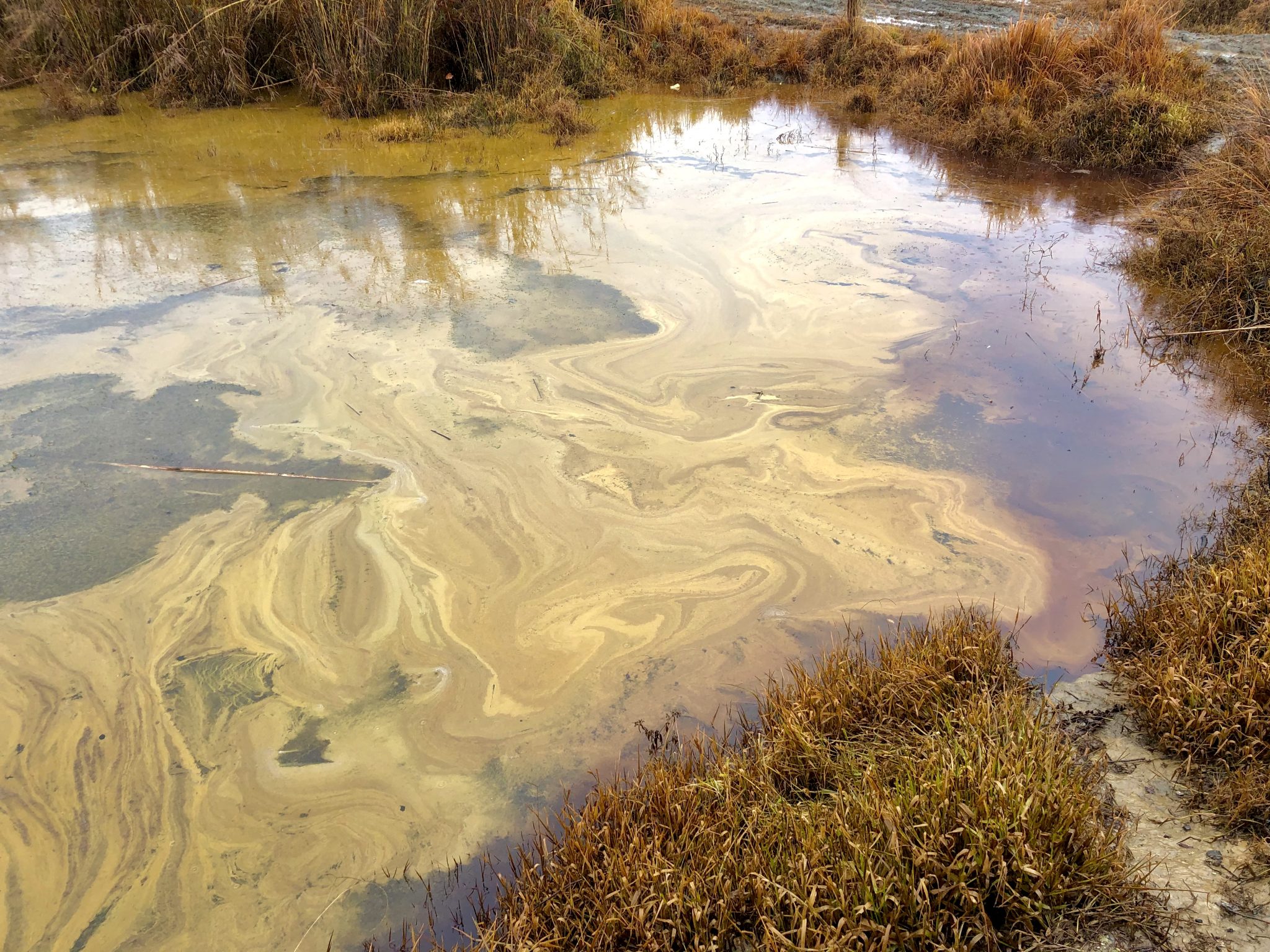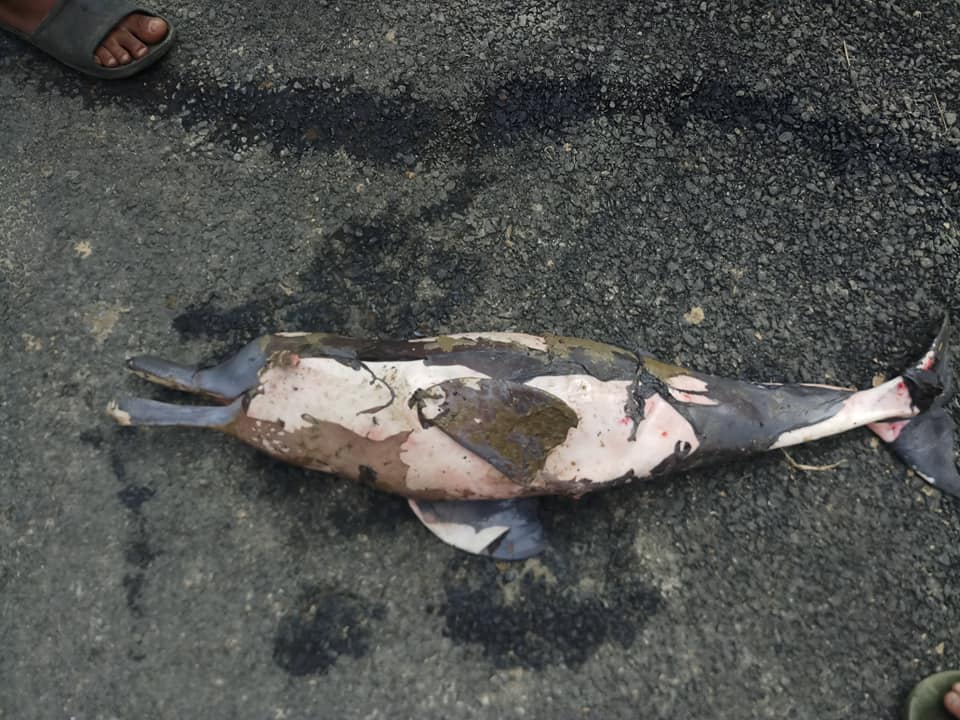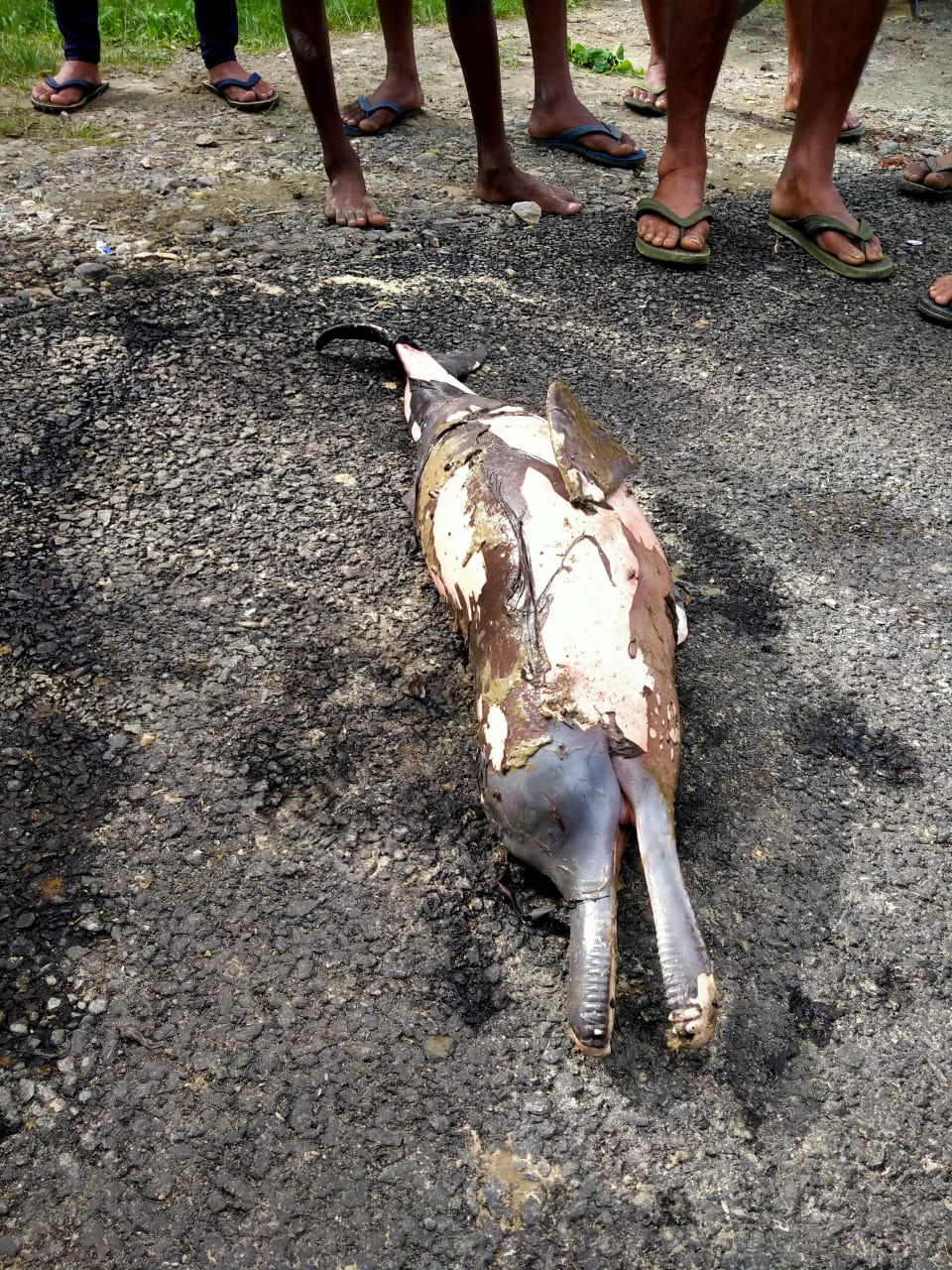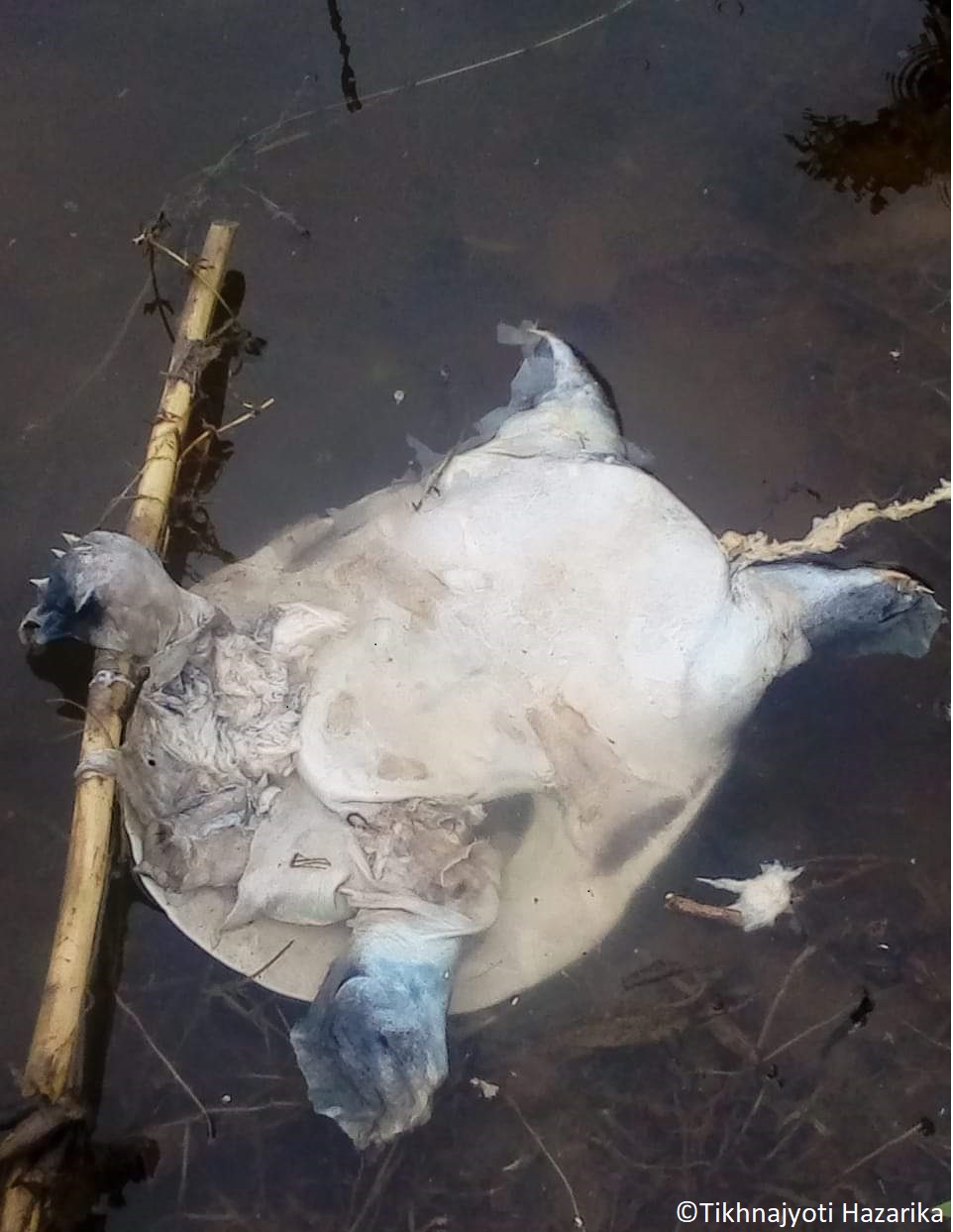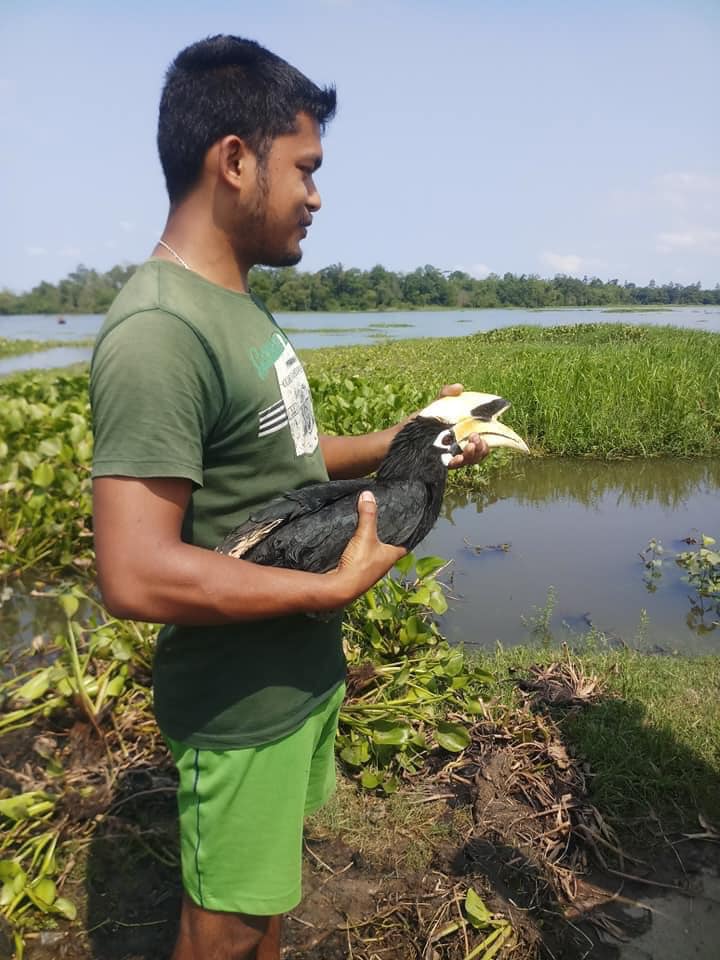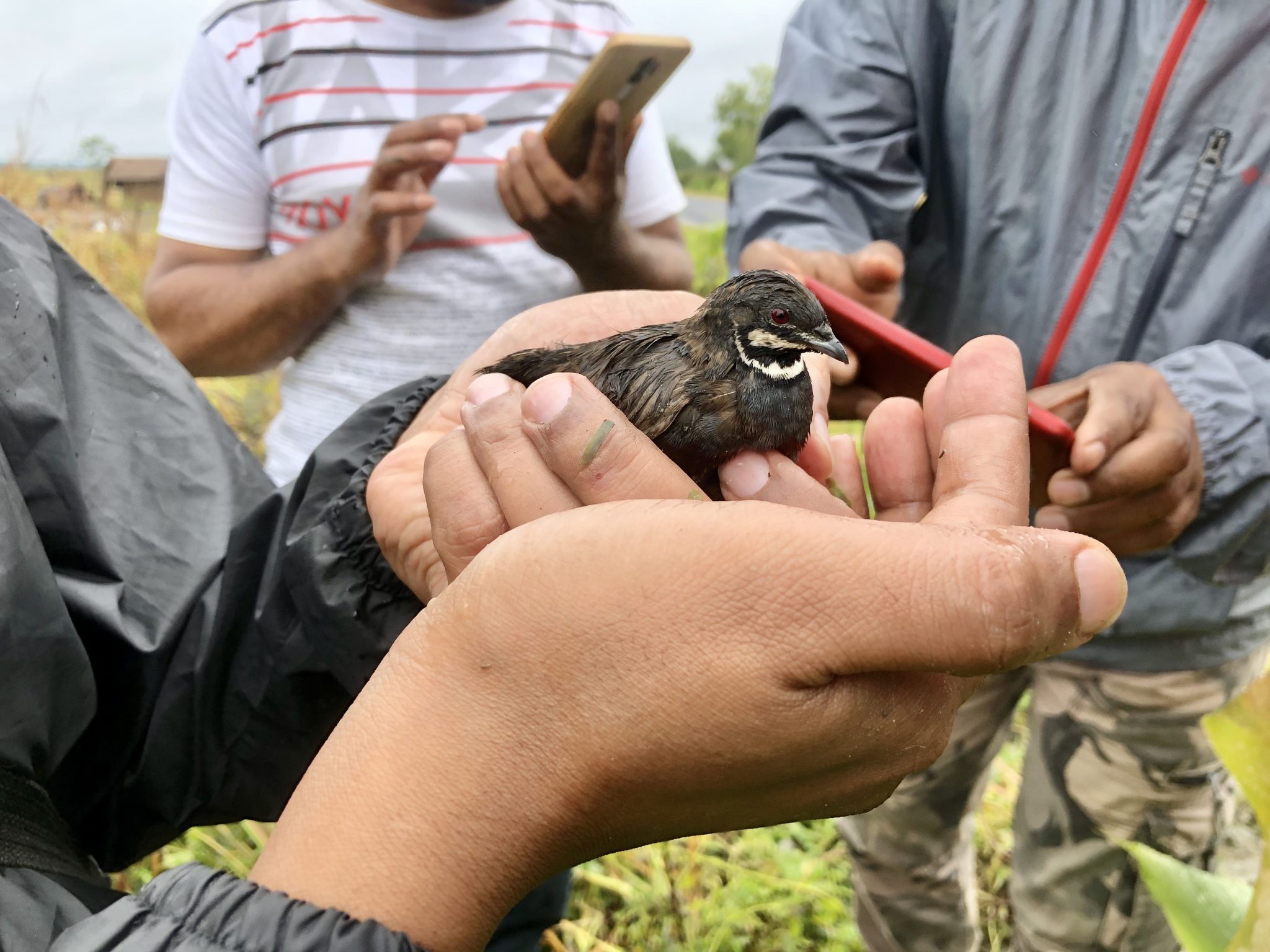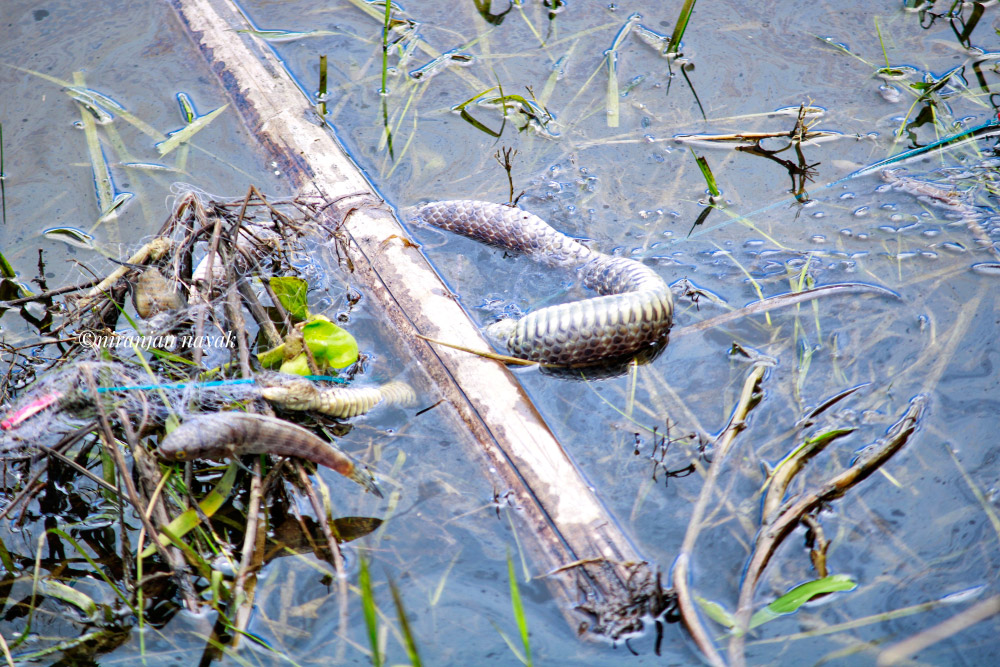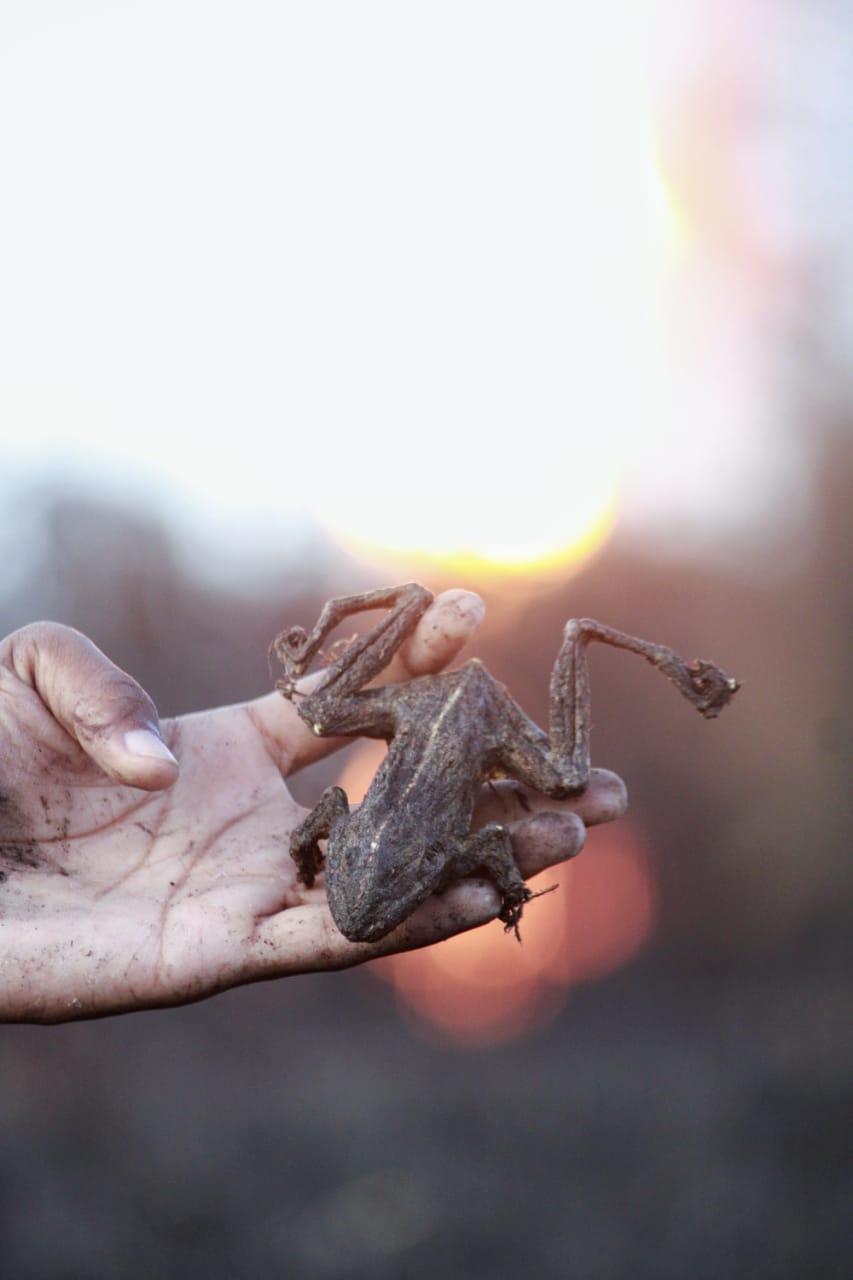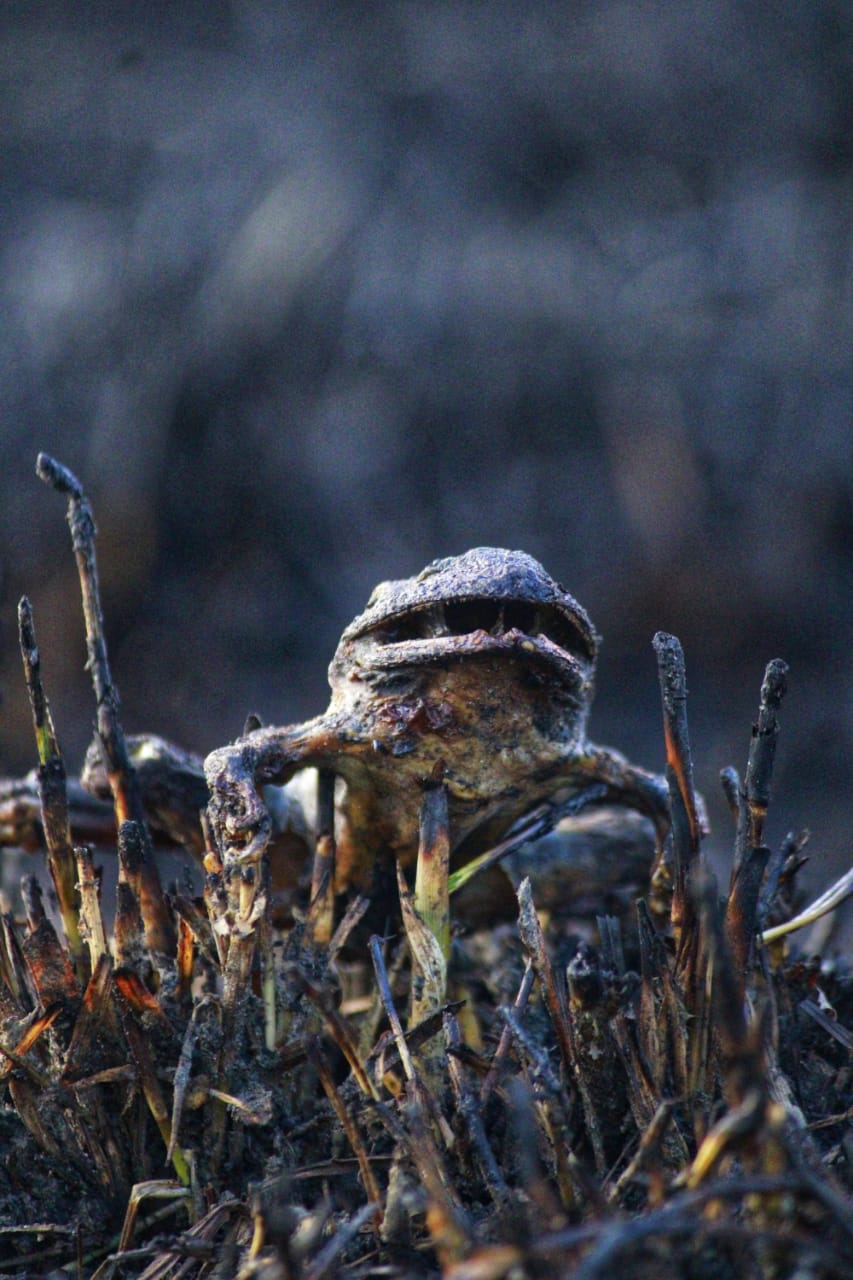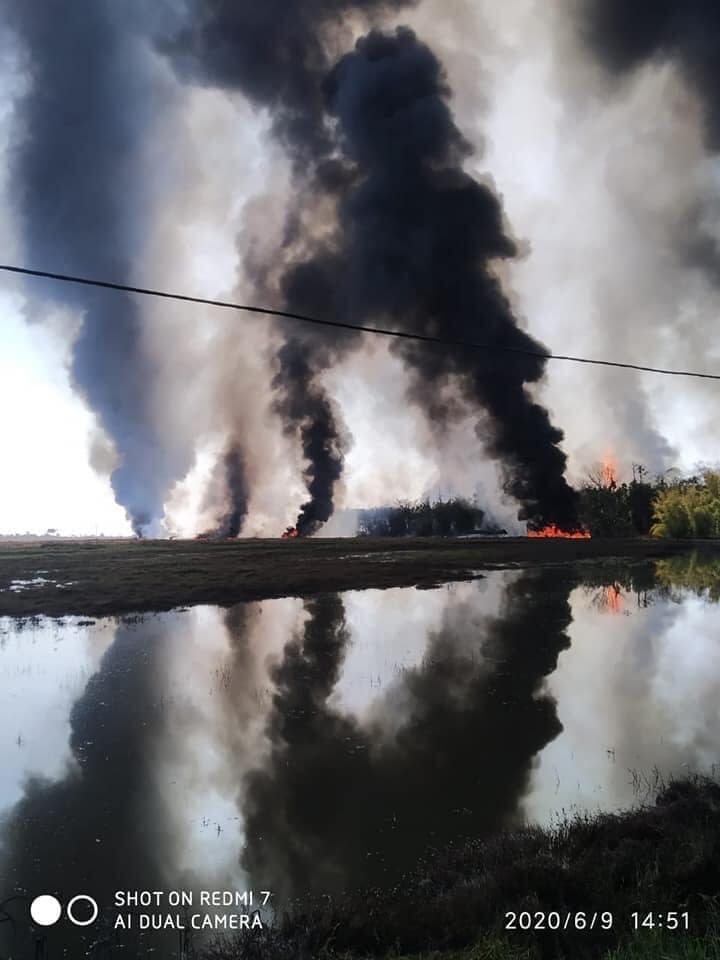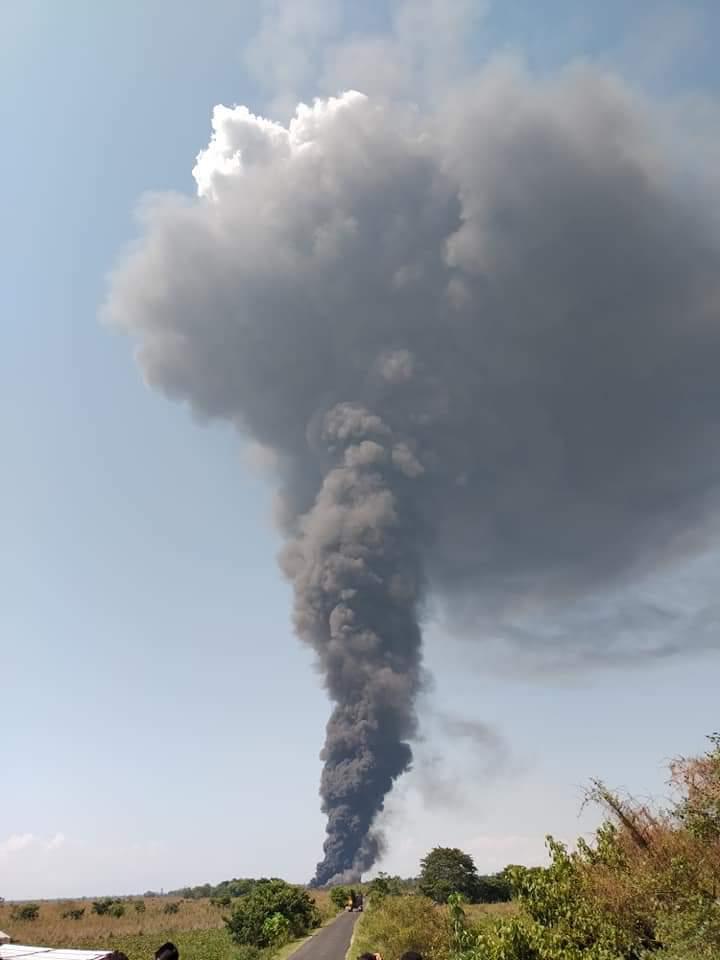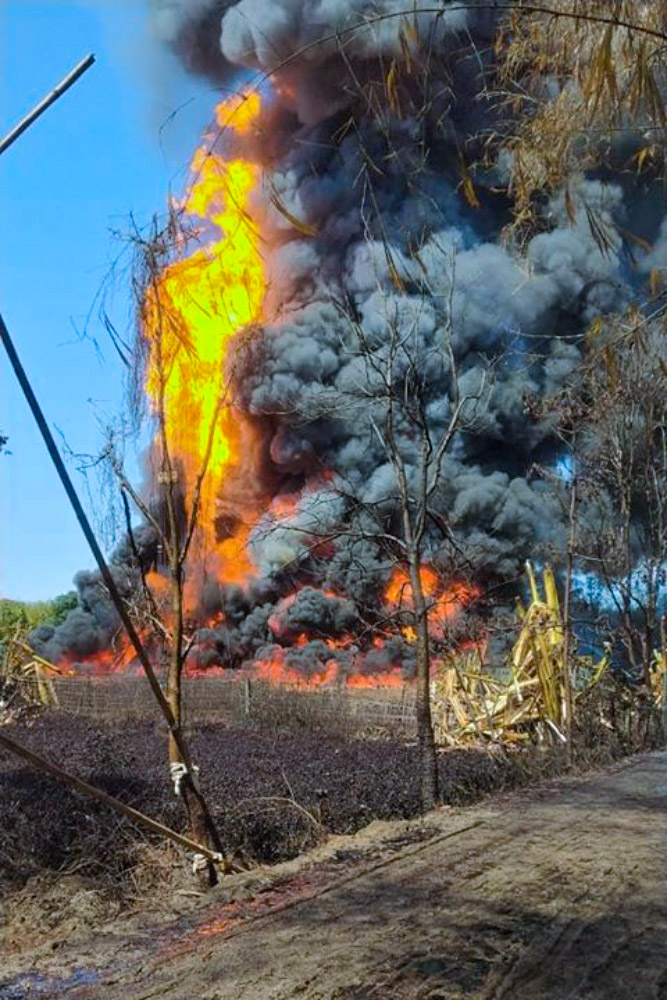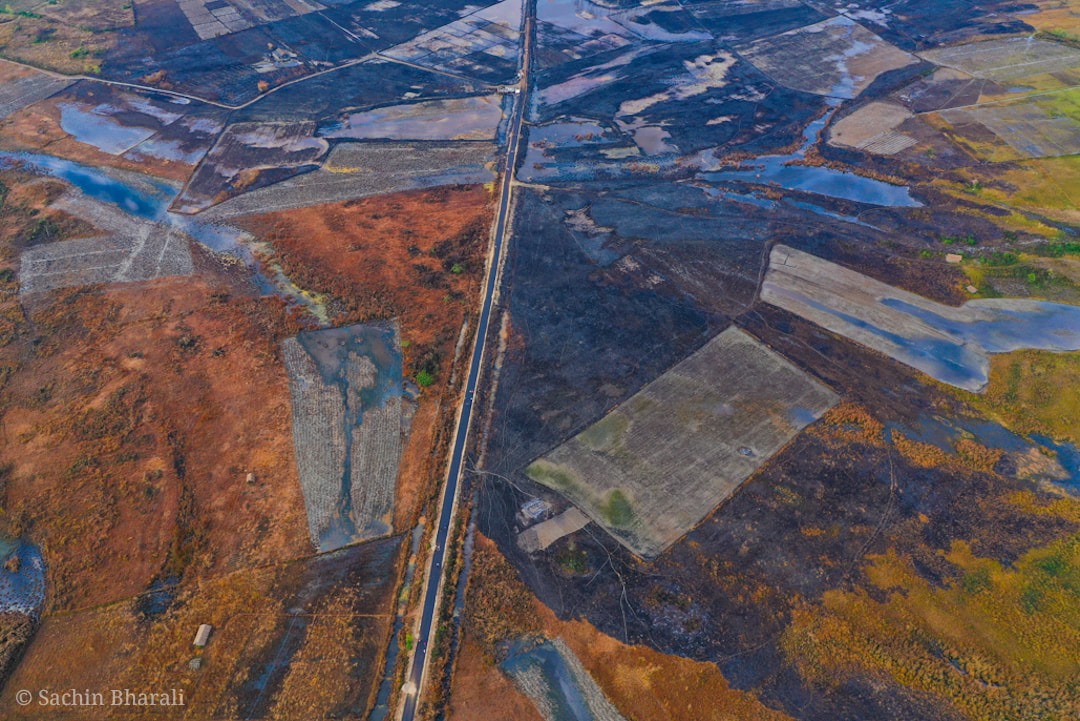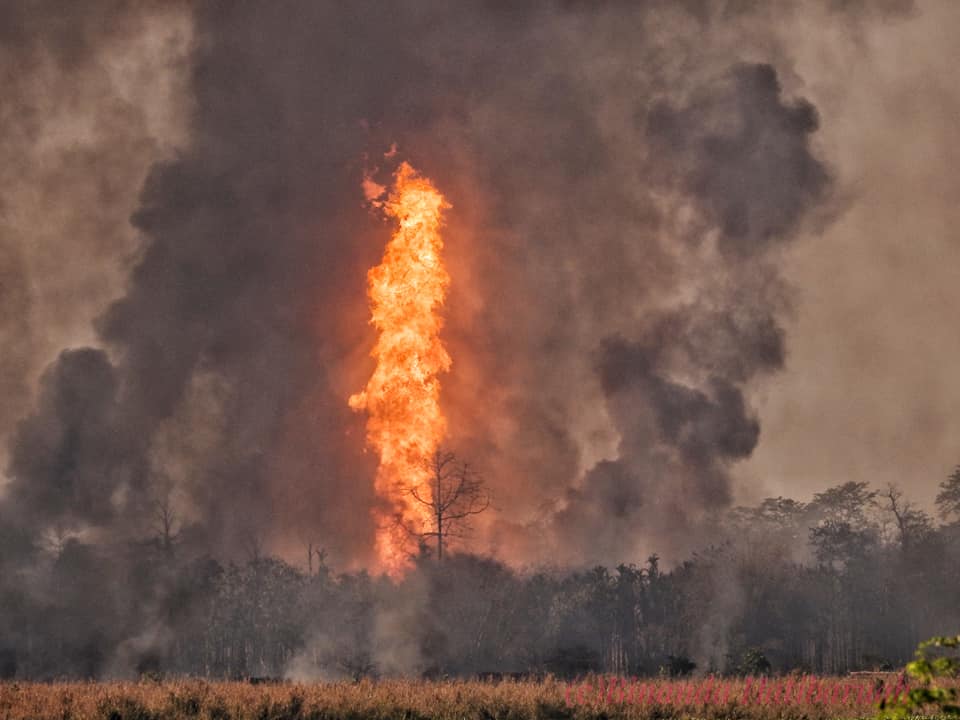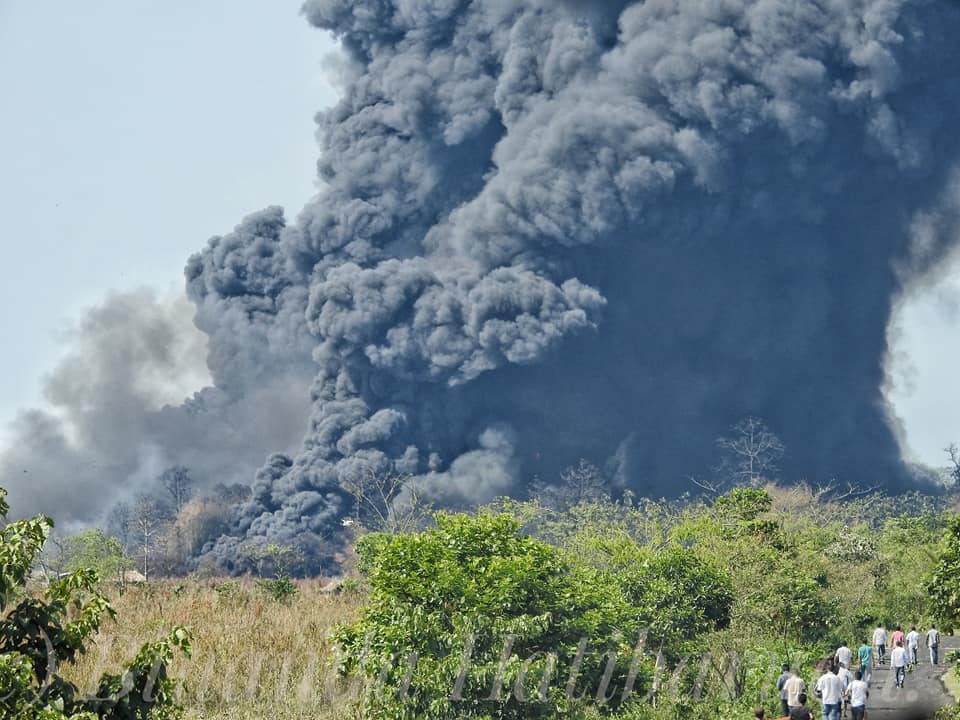On May 27 2020, an oil rig operated by the public sector unit Oil India Limited (OIL) in Baghjan, Assam broke out into a fire, and a consequent raging inferno on 9th June, 2020 after leaking oil and gas uncontrolled, for 12 days. The disaster has caused irreversible damage to the region’s fragile ecology and wildlife, and acutely impacted the livelihoods of communities that rely on the wetlands and forests.
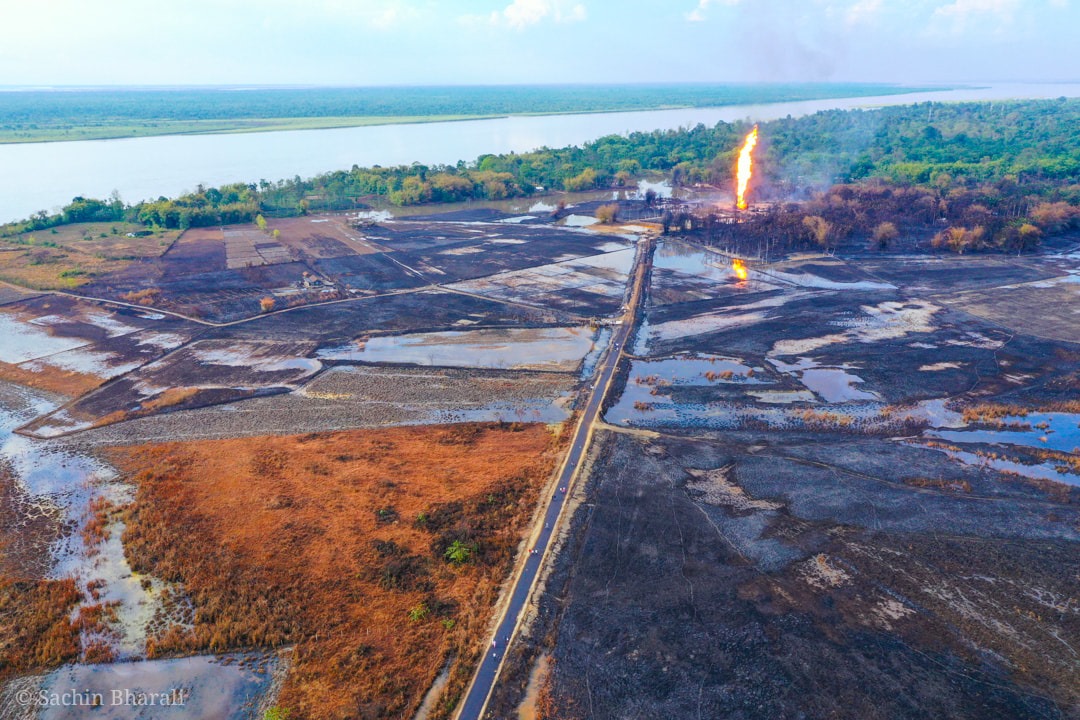
Drone image of oil well no. 5 at Baghjan © Sachin Bharali
Timeline
On 27th May 2020 around 10.20 AM, a blow-out occurred in a well operated by OIL (BJN-5) in the Baghjan area under Tinsukia district, Assam. On the same evening, oil began leaking out of the well, along with the gas. The leak continued uncontrolled from the well, for 12 days, while OIL announced that they did not have the expertise to control the leak and had to fly in experts from Singapore and the United States to deal with the situation.The blowout happened while workover operations were going to produce gas from a new sand (oil and gas-bearing) reservoir at a depth of 3,729 metres. The oil well, which has been operational since 2005, was producing around 100,000 (1 lakh) Standard Cubic Metre per day of gas from a depth of 3,870 metres.
On the afternoon of 9th June, the alarming situation turned into a catastrophe when the oil well caught fire and exploded into a raging inferno. The oil and gas leapt to a height of 50m after the explosion, and as reported by eyewitnesses, could be seen from 10km away. It has severely impacted the lives of communities in this region, who are already dealing with financial hardship due to COVID19 restrictions, and whose livelihoods are largely dependent on fishing and agriculture.
Fire ravages a wetland, national park, biodiversity hotspot…
This well is located 1.108 km from the boundary of Dibru-Saikhowa National Park, and around 500 metres from the Maguri-Matapung Beel Wetlands; a wetland that is an Important Bird Area (IBA), and a part of the Dibru-Saikhowa Biosphere Reserve; both these reserves together sit in the heart of the globally important Eastern Himalayas biodiversity hotspot, known for the extremely high diversity of endemic species found here, which also face severe anthropogenic pressures.The ecological catastrophe underway due to this disaster has irrevocably damaged the mosaic of unique ecosystems that constitute the Dibru-Saikhowa landscape.
The landscape is home to a remarkable diversity of wildlife, several of which are endemic to this region and already threatened by anthropogenic pressures. This disaster will have severe, long-term impacts on wild animals here, like the Hoolock Gibbon (India’s only ape)the Gangetic River Dolphin, India’s national aquatic animal (both endangered in the IUCN Red List), and other species like the clouded leopard, the critically endangered Chinese pangolin and pig-tailed macaques. Critically endangered birds such as the Bengal florican, white-rumped vulture, slender-billed vulture, Baer’s Pochard and White-bellied Heron find their last refuge here, as well as the other endangered birds like white-winged wood duck and greater adjutant stork. The rare black-breasted parrotbill is also a unique endemic species found here. The first-ever records in India of the Baikal Bush Warbler and White-browed crake were from the Maguri wetlands.
The Chief Minister of Assam, Sarbananda Sonowal has ordered a probe into the fire. No results are out yet. Read the media coverage of the tragedy.
Impact on Wildlife
Together, the Maguri-Motapung Beel Wetland and Dibru-Saikhowa National Park are a part of the larger Dibru-Saikhowa landscape, known worldwide for the unique assemblage of species found here, many of which are endangered, andendemic. This landscape comprises a mosaic of many ecosystems like wetlands, swamp forests and grasslands.
Locals have been uncovering and documenting the damage done by this disaster. Several have recorded photos of birds – dead and live, coated with oil. Dead fish have been floating up in the Beel, which is coated with a layer of oil.
A preliminary impact assessment done by Wildlife Institute of India (WII) reports, “The oil spill has caused mortality and wilting of many plant species, and has severely affected the health of forests and grassland. There is a coating of oil film on the vegetation, the beel, riverfront, as well as on many species of river fauna in the impacted area.” It also warns that the leakage of hazardous and toxic fumes is known to persist in aquatic and soil systems in the long-term, and leads to prolonged ill effects on all life forms, including humans.
Photo-documentations of the first casualties of this disaster have been reported by locals: Environmentalists raised an alarm on 29th May (two days after the initial gas leak) when locals found a carcass of an endangered Gangetic dolphin, with its skin peeled in a wetland near the area. “What we are seeing is complete horror. Condensed oil is leaking continuously… There is a thick layer of crude oil on the water. Fish are dying and some cattle that graze in the adjacent wetlands are also dead,” said Mridupaban Phukon, a student and wildlife activist, to Hindustan Times.
Jiban Dutta, a bird guide from Notungaon told Mongabay-India that locals had rescued a king quail which was covered by oil and handed it over to the forest department. Deborshee Gogoi, a lecturer at Digboi college and co-author of Birds of Maguri-Motapung Beel added, “Birders from all over the globe come here to see birds like Marsh Babbler, Jerdon’s Babbler, Swamp Prinia, Black-breasted Parrotbill, Swamp Francolin, etc. However, despite this being the nesting season of the birds, very few of them can be seen in the area presently. Either they have flown away or they have died.”
Numerous rare and endemic species found here are at risk due to the oil spill and fire. According to one 2016 survey, the Dibru-Saikhowa landscape has recorded 503 species of birds, 37 species of mammals, 42 species of reptiles, 17 species of amphibian, 104 species of fishes, 105 species of butterfly and 91 globally threatened faunal species.
The WII preliminary impact assessment report also mentions that oil has leaked into adjoining Lohit river, polluting the water and adjoining Maguri-Motapung wetland with toxic pollutants. The report, which has been submitted to the Ministry of Environment and Forests, has recommended that the approved new wells and any further exploration in the area should be put on hold until OIL authorities put in place their disaster-handling capabilities.
Communities affected, amid ongoing COVID restrictions
Initially, the gas leak required the evacuation of thousands of people who lived nearby due to sprouting of natural gas and condensate droplets.Many villagers living near the site were also forced to leave their homes following unexplained tremors felt in the area over the past two-three days. The situation escalated rapidly when the well caught fire, forcing over 8,000 people to be evacuated from their homes.
The impact of the fire was particularly severe on the residents of Baghjan village, located around one kilometre from the site, who were already living in a relief camp following the blowout on May 27, amid ongoing COVID-19 lockdown restrictions.
Niranta Gohain, an environmental activist from the area told Mongabay-India, “Agriculture, fishing and animal rearing are the main occupation of most people in this area. But now because of the oil spill, agricultural land will become infertile and no farming will be possible for many years. Also, fishes and domestic animals are dying in large numbers because oil has contaminated grasslands and water bodies.”
Additionally, in Baghjan village, several small-scale tea gardens operate under local youth of the village and are acutely facing the impact of this disaster. Ranjan Das, a Tinsukia-based environmentalist told Conservation India that once the fire broke out, tea gardens within a 1km radius were burned to ashes.Tea leaves in gardens situated within 4km of the oil well are covered with oil condensate, and other toxic chemicals. He added that this is a major blow for local youth who rely on this mode for income, with tea factories now rejecting tea leaves with toxic condensate on them.
Sadly, villages further away from Baghjan are also facing the impacts. Mongabay-India reports, “While Baghjan has been the most affected by the blowout due to its proximity to the well, villages located further downstream like Notungaon, Milanpur, Hatibagh, Bebejia and Barekuri have also suffered. Droplets of condensate (which is the residue from gas condensing after coming in contact with water) have reportedly spread up to a radius of 5 km, falling on trees, tea gardens, grasslands, water bodies, and on the roofs of houses.”
OIL responds, but violated environmental laws in the past
On the morning of 10th June, the bodies of two firefighters, Durlov Gogoi and Tikeshwar Gohain, both of whom were employees of OIL were recovered from a pond near the site by National Disaster Response Force. As per OIL’s statement on 11th June, a one-time compensation of Rs. 30,000 for 1,610 affected families, totalling to Rs 4.83 crore has been deposited to the District Commissioner of Tinsukia. Affected people are currently accommodated in 12 relief camps and being provided basic supplies.
According to a statement released by OIL on 7th June,an independent consultancy was hired to conduct an Environment Impact Assessment (EIA) study in and around the Dibru-Saikhowa National Park, Maguri-Motapung Beel Wetland, and Baghjan village, to assess the effects of blowout on terrestrial and aquatic ecosystems, and also conduct a socio-economic impact assessment in consultation with stakeholders. An impact assessment was also carried out by Tata Energy Research Institute (TERI) and OIL officials on 6th June.
However, OIL has blatantly flouted environmental laws in the past. In 2013, OIL India approached the National Board for Wildlife (NBWL) requesting permission for laying another crude-oil pipeline near Dibru-Saikhowa National Park (DSNP) A consequent site inspection by NBWL members revealed that most of the pipeline-laying work had already been completed illegally before seeking any permission. This demonstrates a clear violation of environmental regulations, sadly, from a public-sector company.
OIL has a poor track record in complying with democratic processes and adhering to environmental safeguards. The public sector unit has repeatedly refused to hold public hearings before establishing new projects, citing challenges from “unruly acts by local pressure groups”. A consequent amendment to the EIA process did away with public hearings entirely;In January 2020, the MoEF amended the EIA Notification, 2006 by classifying oil and gas projects as ‘B2 projects’, a move that exempts hydrocarbon exploration projects from having to conduct public hearings.
MoEF clears seven more OIL-wells inside Dibru-Saikhowa National Park
On 11th May, 2020, mere weeks before the spill occurred and fire broke out, the Ministry of Environment, Forests and Climate Change approved environmental clearance to Oil India Ltd for ‘Extension Drilling and testing of Hydrocarbons’ at seven more locations inside the area of Dibru-Saikhowa National Park.
The clearance order raises serious considerations about the ethos and priorities of the ministry–already under severe criticism for steadily approving numerous infrastructural projects in natural landscapes and wildlife reserves across India, while overlooking environmental legislations, not conducting due site inspections, and without considering the impact of these projects on wildlife and natural habitats.


